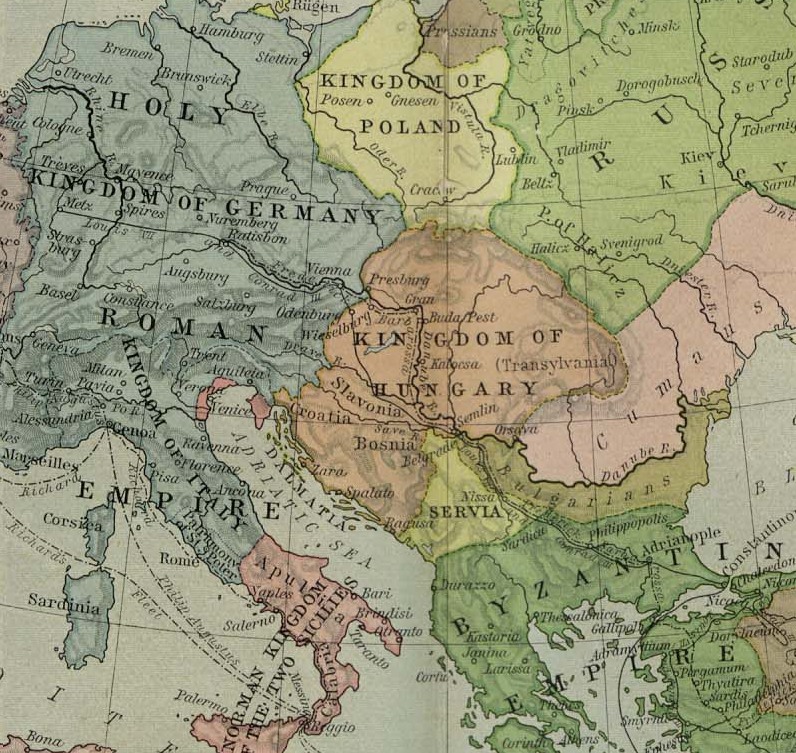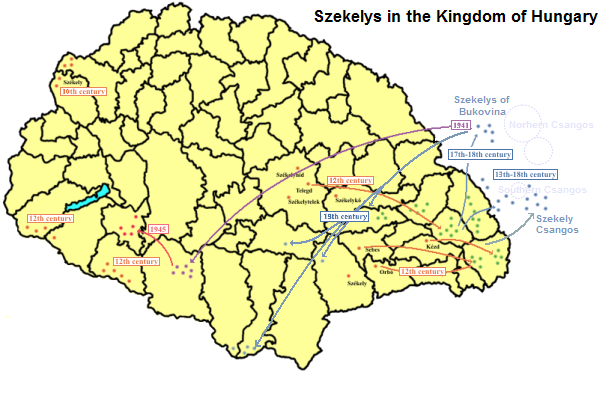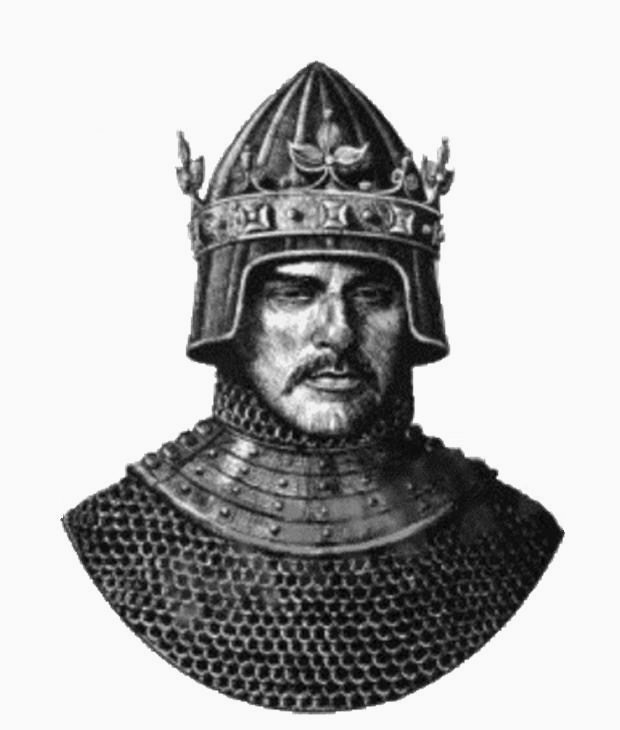|
Conditional Noble
A conditional noble or predialistSegeš 2002, p. 286. ( hu, prédiális nemes; la, nobilis praedialis; hr, predijalci) was a landowner in the Kingdom of Hungary who was obliged to render specific services to his lord in return for his landholding, in contrast with a " true nobleman of the realm" who held his estates free of such services. Most conditional nobles lived in the border territories of the kingdom, including Slavonia and Transylvania, but some of their groups possessed lands in estates of Roman Catholic prelates. Certain groups of conditional nobility, including the " ecclesiastic nobles" and the " nobles of Turopolje" preserved their specific status until the 19th century. History Society in the early medieval Kingdom of Hungary was basically split into the two major groups: "freemen" ''(liberi)'' and "servants" ''(servi)''.Kontler 1999, p. 69. Although legislation sharply distinguished these two categories (for instance, by prohibiting intermarriage),Rady 2000, p ... [...More Info...] [...Related Items...] OR: [Wikipedia] [Google] [Baidu] |
Europe Mediterranean 1190 Cropped
Europe is a large peninsula conventionally considered a continent in its own right because of its great physical size and the weight of its history and traditions. Europe is also considered a subcontinent of Eurasia and it is located entirely in the Northern Hemisphere and mostly in the Eastern Hemisphere. Comprising the westernmost peninsulas of Eurasia, it shares the continental landmass of Afro-Eurasia with both Africa and Asia. It is bordered by the Arctic Ocean to the north, the Atlantic Ocean to the west, the Mediterranean Sea to the south and Asia to the east. Europe is commonly considered to be separated from Asia by the watershed of the Ural Mountains, the Ural River, the Caspian Sea, the Greater Caucasus, the Black Sea and the waterways of the Turkish Straits. "Europe" (pp. 68–69); "Asia" (pp. 90–91): "A commonly accepted division between Asia and Europe ... is formed by the Ural Mountains, Ural River, Caspian Sea, Caucasus Mountains, and the Black Sea wit ... [...More Info...] [...Related Items...] OR: [Wikipedia] [Google] [Baidu] |
Stephen I Of Hungary
Stephen I, also known as King Saint Stephen ( hu, Szent István király ; la, Sanctus Stephanus; sk, Štefan I. or Štefan Veľký; 975 – 15 August 1038), was the last Grand Prince of the Hungarians between 997 and 1000 or 1001, and the first King of Hungary from 1000 or 1001, until his death in 1038. The year of his birth is uncertain, but many details of his life suggest that he was born in, or after, 975, in Esztergom. He was given the pagan name Vajk at birth, but the date of his baptism is unknown. He was the only son of Grand Prince Géza and his wife, Sarolt, who was descended from a prominent family of '' gyulas''. Although both of his parents were baptized, Stephen was the first member of his family to become a devout Christian. He married Gisela of Bavaria, a scion of the imperial Ottonian dynasty. After succeeding his father in 997, Stephen had to fight for the throne against his relative, Koppány, who was supported by large numbers of pagan warriors. He defea ... [...More Info...] [...Related Items...] OR: [Wikipedia] [Google] [Baidu] |
Voivode Of Transylvania
The Voivode of Transylvania (german: Vojwode von Siebenbürgen;Fallenbüchl 1988, p. 77. hu, erdélyi vajda;Zsoldos 2011, p. 36. la, voivoda Transsylvaniae; ro, voievodul Transilvaniei) was the highest-ranking official in Transylvania within the Kingdom of Hungary from the 12th century to the 16th century. Appointed by the monarchs, the voivodesthemselves also the heads or ''ispáns'' of Fehér Countywere the superiors of the ''ispáns'' of all the other counties in the province. They had wide-ranging administrative, military and judicial powers, but their jurisdiction never covered the whole province. The Saxon and Székely communitiesorganized into their own districts or "seats" from the 13th centurywere independent of the voivodes. The kings also exempted some Transylvanian towns and villages from their authority over the centuries. Even so, the Voivodeship of Transylvania "was the largest single administrative entity"Jefferson 2012, p. 142. in the enti ... [...More Info...] [...Related Items...] OR: [Wikipedia] [Google] [Baidu] |
Székelys
The Székelys (, Székely runes: 𐳥𐳋𐳓𐳉𐳗), also referred to as Szeklers,; ro, secui; german: Szekler; la, Siculi; sr, Секељи, Sekelji; sk, Sikuli are a Hungarian subgroup living mostly in the Székely Land in Romania. A significant population descending from the Székelys of Bukovina lives in Tolna and Baranya counties in Hungary and certain districts of Vojvodina, Serbia. In the Middle Ages, the Székelys played a role in the defense of the Kingdom of Hungary against the Ottomans in their posture as guards of the eastern border. With the Treaty of Trianon of 1920, Transylvania (including the Székely Land) became part of Romania, and the Székely population was a target of Romanianization efforts. In 1952, during the communist rule of Romania, the former counties with the highest concentration of Székely population – Mureș, Odorhei, Ciuc, and Trei Scaune – were legally designated as the Magyar Autonomous Region. It was superseded in 1960 ... [...More Info...] [...Related Items...] OR: [Wikipedia] [Google] [Baidu] |
Transylvanian Saxons
The Transylvanian Saxons (german: Siebenbürger Sachsen; Transylvanian Saxon: ''Siweberjer Såksen''; ro, Sași ardeleni, sași transilvăneni/transilvani; hu, Erdélyi szászok) are a people of German ethnicity who settled in Transylvania (german: Siebenbürgen) in waves starting from the mid- 12th century until the mid 19th century. The legal foundation of the settlement was laid down in the Diploma Andreanum issued by King Andrew II of Hungary that is known for providing the first territorial autonomy hitherto in the history. The Transylvanian "Saxons" originally came from Flanders, Hainaut, Brabant, Liège, Zeeland, Moselle, Lorraine, and Luxembourg, then situated in the north-western territories of the Holy Roman Empire around the 1140s. After 1918 and the dissolution of Austria-Hungary, in the wake of the Treaty of Trianon, Transylvania united with the Kingdom of Romania. Consequently, the Transylvanian Saxons, together with other ethnic German sub-groups in newly e ... [...More Info...] [...Related Items...] OR: [Wikipedia] [Google] [Baidu] |
Romanians
The Romanians ( ro, români, ; dated exonym ''Vlachs'') are a Romance languages, Romance-speaking ethnic group. Sharing a common Culture of Romania, Romanian culture and Cultural heritage, ancestry, and speaking the Romanian language, they live primarily in Romania and Moldova. The Demographic history of Romania#20 October 2011 census, 2011 Romanian census found that just under 89% of Romania's citizens identified themselves as ethnic Romanians. In one interpretation of the 1989 census results in Moldova, the majority of Moldovans were counted as ethnic Romanians.''Ethnic Groups Worldwide: A Ready Reference Handbook By'' David Levinson (author), David Levinson, Published 1998 – Greenwood Publishing Group.At the time of the 1989 census, Moldova's total population was 4,335,400. The largest nationality in the republic, ethnic Romanians, numbered 2,795,000 persons, accounting for 64.5 percent of the population. Source U.S. Library of Congress "however it is one interpreta ... [...More Info...] [...Related Items...] OR: [Wikipedia] [Google] [Baidu] |
Vajka
Vojka nad Dunajom ( hu, Vajka, ) is a village and municipality in the Dunajská Streda District in the Trnava Region of south-west Slovakia. History In the 9th century, the territory of Vojka nad Dunajom became part of the Kingdom of Hungary. In historical records the village was first mentioned in 1186. After the Austro-Hungarian army disintegrated in November 1918, Czechoslovak and French troops occupied the area, which despite the majority Hungarian populations of southern Slovakia, and without plebiscite, would later be annexed with the Treaty of Trianon in 1920. Between 1938 and 1945 Vojka nad Dunajom once more became part of Hungary through the First Vienna Award. From 1945 until the Velvet Divorce, it was part of Czechoslovakia. Since then it has been part of Slovakia. The town bears the name of Vajk, the pagan name of St. Stephen of Hungary, first King of Hungary. in 2005, villagers erected a statue of the Saint in front of the local Catholic Church. Geography The mu ... [...More Info...] [...Related Items...] OR: [Wikipedia] [Google] [Baidu] |
Seat (territorial-administrative Unit)
Seats ( la, sedes, hu, szék, german: stuhl, ro, scaun) were administrative divisions in the medieval Kingdom of Hungary. The seats were autonomous regions within the Kingdom, and were independent from the feudal county system. Their autonomy was granted in return for the military services they provided to the Hungarian Kings. The following divisions were at one point Székely seats: * Marosszék * Udvarhelyszék * Csíkszék * Gyergyószék * * Sepsiszék * Orbaiszék * Kézdiszék * Aranyosszék Seats were formed by the: * Székelys * Transylvanian Saxons * Cumans * Jassic people The Jász (''Latin'': Jazones) are an Eastern Iranic ethnic group who have lived in Hungary since the 13th century. They live mostly in a region known as ''Jászság'', which comprises the north-western part of Jász-Nagykun-Szolnok county. ... * Ten Lance Bearers Most seats gave up their autonomous status and military traditions in late medieval times and paid tax instead. Medie ... [...More Info...] [...Related Items...] OR: [Wikipedia] [Google] [Baidu] |
Archbishopric Of Esztergom
In church governance, a diocese or bishopric is the ecclesiastical district under the jurisdiction of a bishop. History In the later organization of the Roman Empire, the increasingly subdivided provinces were administratively associated in a larger unit, the diocese (Latin ''dioecesis'', from the Greek term διοίκησις, meaning "administration"). Christianity was given legal status in 313 with the Edict of Milan. Churches began to organize themselves into dioceses based on the civil dioceses, not on the larger regional imperial districts. These dioceses were often smaller than the provinces. Christianity was declared the Empire's official religion by Theodosius I in 380. Constantine I in 318 gave litigants the right to have court cases transferred from the civil courts to the bishops. This situation must have hardly survived Julian, 361–363. Episcopal courts are not heard of again in the East until 398 and in the West in 408. The quality of these courts was l ... [...More Info...] [...Related Items...] OR: [Wikipedia] [Google] [Baidu] |
Martyn Rady
Martyn Rady (born 1955) is Masaryk Professor Emeritus of Central European History at the School of Slavonic and East European Studies (SSEES), University College London. He was from 1995 to 2009 Warden of Hughes Parry Hall, an intercollegiate hall of the University of London. He retired from UCL in December 2020. He lives in Ramsgate in Kent. Career Martyn Rady was educated at Caterham School and Westfield College, University of London, where he read for a BA History. He went on to do postgraduate work at the University of London and the Hungarian Academy of Sciences, which he attended as a British Council exchange student. While a teacher at Mill Hill School in the 1980s Rady wrote several books for sixth-formers, including ''Emperor Charles V'' (Longman, 1987). He moved to SSEES in 1990, where he had previously completed his PhD, publishing books and articles primarily on the history of Romania and Hungary. His principal academic interest is Hungarian legal history and the ... [...More Info...] [...Related Items...] OR: [Wikipedia] [Google] [Baidu] |




